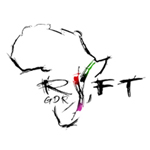Publication
Disponible en ligne le 16 janvier 2023
Journal of Great Lakes Research
The role of wind-wave related processes in redistributing river-derived terrigenous sediments in Lake Turkana: A modelling study
A complete annual cycle of the dynamics of fine-grained sediment supplied by the Omo and smaller rivers is simulated for Lake Turkana, one of the world’s large lakes, with the hydrodynamic, wave and sediment transport model Delft3D. The model is forced with river liquid and solid discharge and wind data in order to simulate cohesive sediment transport and resuspension. It simulates stratification due to salinity, wave generation and dissipation, and sediment advection and resuspension by waves and currents, with multiple cohesive sediment fractions. A comparison of the simulation results with remotelysensed imagery and with available in-situ sediment deposition rates validates the model. By devising simulation scenarios in which certain processes were switched on or off, we investigated the contribution of waves, wind-induced surface and bottom currents, salinity-induced stratification and river jet, in resuspending and transporting fine sediments in the lake basin. With only the wind or river influence, most of the sediment deposition occurs in the first 10 km off the Omo River mouth and at a depth < 10 m. When waves are switched on, increased bed shear stresses resuspend most of the fine sediments, that are then deposited further and deeper in the first 30 km, in water depths > 30 m. This study sheds new light on sediment transport in Lake Turkana and in great lakes in general, favouring the view that wind-waves can be the main agent that transports sediment away from river mouths and to deeper areas, as opposed to river-plume or gravity-driven transport.
Références
Florin Zӑinescu, Helena van der Vegt, Joep Storms, Alexis Nutz, Guilherme Bozetti, Jan-Hendrik May, Sagy Cohen, Frederic Bouchette, Simon Matthias Mayi, Mathieu Schuster – The role of wind-wave related processes in redistributing river-derived terrigenous sediments in Lake Turkana: A modelling study – Journal of Great Lakes Research: In Press – doi.org/10.1016/j.jglr.2022.12.013


